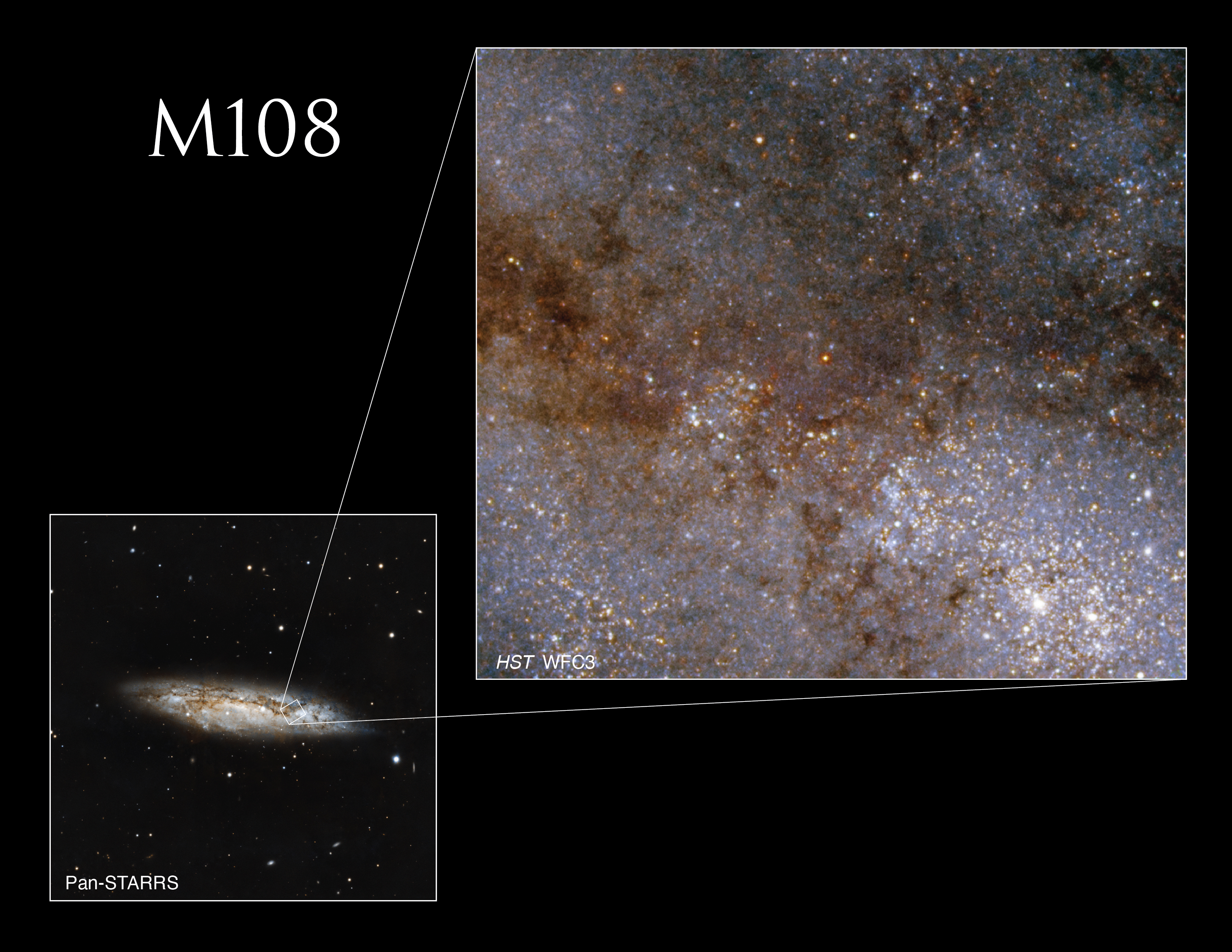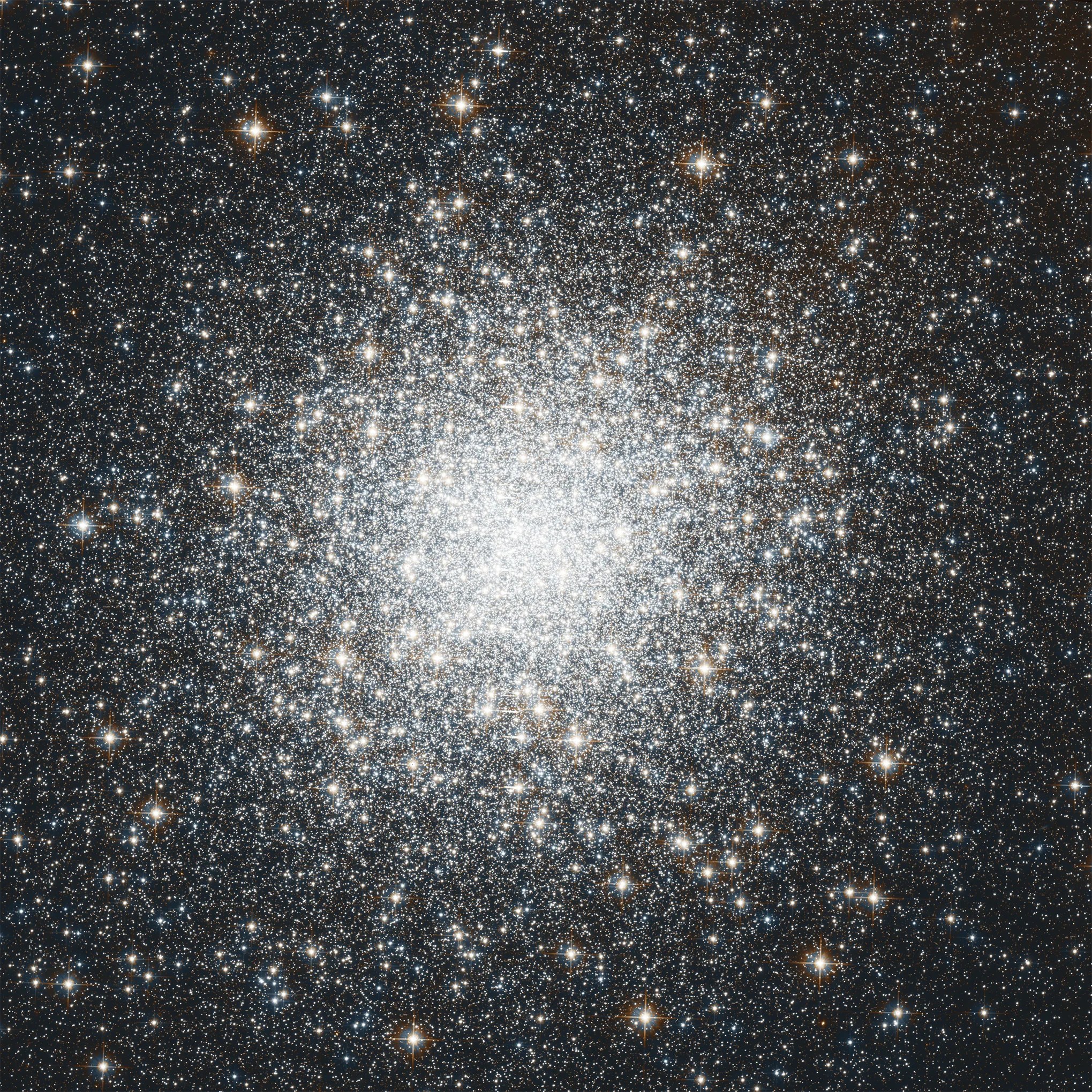Messier 108
Messier 108 is one of the largest and brightest members of the Ursa Major galaxy cluster, which is part of the Virgo Supercluster.
Distance
46 million light-years
Apparent Magnitude
10.0
constellation
Ursa Major
object type
Barred Spiral Galaxy

M108, or the Surfboard galaxy, is located in the constellation Ursa Major approximately 46 million light-years away. It is called the Surfboard galaxy because, when viewed with a telescope, it is seen nearly edge-on with no apparent bulge or pronounced core.
M108 was discovered by Pierre Méchain in 1781 three days after he discovered M97. Charles Messier’s notes state that he observed the galaxy in 1781 but never took an accurate position of it or officially added it to his catalog. M108 was finally added to Messier’s catalog in 1953 by astronomer Owen Gingerich.

There is little evidence of a well-defined spiral pattern in the galaxy, but M108 is classified as a barred spiral galaxy with loosely wound spiral arms. Observations show young star clusters exposed against a mottled and detail-rich background. M108 also contains supershells, which are shells of gas driven by bursts of star formation and resulting supernova explosions. The supershells could also be driven by stellar jets or an infall of gas from outside the galaxy.
At the center of M108 is a supermassive black hole estimated to be 24 million times as massive as the Sun. The Chandra X-ray Observatory discovered multiple X-ray sources in M108, with the brightest X-ray source suspected to be an intermediately sized black hole that is actively accreting material.

M108 is one of the largest and brightest members of the Ursa Major cluster, which is part of the Virgo Supercluster of galaxies. It has a magnitude of 10 and is located just under the bowl of the Big Dipper. M108 can be seen with small telescopes as an elliptical streak of light with a brighter core, while telescopes 8 inches or larger will reveal more detail. The best time to observe M108 is in April, but it can be seen throughout the year for those in the Northern Hemisphere.

Explore Hubble's Messier Catalog
The following pages contain some of Hubble’s best images of Messier objects.

Messier 1 (The Crab Nebula)
Better known as the Crab Nebula, Charles Messier originally mistook Messier 1 for Halley’s Comet, which inspired him to create…

Messier 2
Hubble's image of Messier 2 is comprised of visible and infrared wavelengths of light.

Messier 3
Messier 3 holds more than 500,000 stars.




